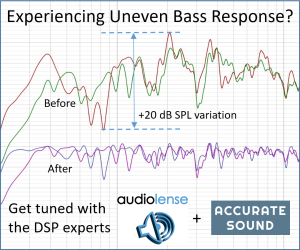Allan S
New Member
More
- Preamp, Processor or Receiver
- PS Audip Gain Cell DAC
- Main Amp
- PS Audio M1200
- Additional Amp
- NAD T758
- Streaming Equipment
- Bluesound Vault 2i
- Front Speakers
- Philharmonic Audio BMR
- Center Channel Speaker
- Revel Concerta C10
- Surround Speakers
- Revel Concerta M8
- Other Speakers
- Spatial Audio M4 Saphire
Greetings. I’m working on 2 channel listening space room correction V2.0 and would appreciate some help understanding surprising REW measurements of several Dirac filters.
A little background. After blindly throwing room treatments at a low frequency resonance problem with underwhelming results, I’m burrowing into the REW/DSP rabbit hole before doing anything else. I am thankful for the depth of knowledge, resources, and references here that have led to a much better appreciation for the role of DSP.
A lot of the references listed below were/are over my head but, after secondary, tertiary, and quaternary (new word in my vocabulary) references, enough got through to reorder DSP priority in my room correction plans.
To the specifics: To test DSP ability to tame low frequency response I temporarily moved a NAD T758V3 with Dirac Live on board into the 2 channel space. For this limited purpose I only measured one mic location to create 2 filters for the primary listening position, one full range and another with the upper curtain drawn to ~400 hz. The UMIK-1 was routed to the desktop running Dirac.
After exporting the filters to the NAD I ran 3 groups of REW sweeps, one for each filter and another for Dirac Off. Each group consisted of 2 sweeps each for the left speaker, right speaker, and both speakers. I retained one sweep when constructing a filter comparison .mdat.
The REW signal chain was from the same desktop running Dirac to the main system DAC then to an analog in on the NAD.
Attached are several REW Dirac sweep comparisons and a sketch of my asymmetric space that includes basic dimensions. The sketch does not include front wall GIK impressions corner traps w/scatter plates, RH side wall 244 bass traps, rear wall Impressions bass traps w/ scatter plates, and free-standing bass trap panels in the rear wall corners. The treatments were in place for creation of all filters and REW sweeps.
Each sweep / comparison description is followed by a question I have for each. Since my questions relate to overall characteristics, the sweeps are displayed at 1/3 octave smoothing for clarity.
Three of the images depict Dirac Off, 400 Hz filter, and Full Range filter left hand speaker, right hand speaker, and both speaker overlays. Q: Please compare the LH, RH, and combined sweeps for each. In the Dirac Off overlay the individual speaker and combined speaker frequency response characteristics appear to be consistent with each other. The roll offs make sense. With either filter on, the combined speaker responses are surprising considering how flat the individual speaker responses are. Maybe too flat through 20 KHz?
Another image is a Dirac Off and Full Range combined speaker overlay. Q: In this comparison the combined speaker differences are obvious. I'd like to understand why Full Range rolls off so quickly and so far only to peak and roll off again.
The last image is a 400 Hz and Full Range combined speaker overlay. In this I am surprised how different the filters are below 400 Hz. I expected they’d be the same up to the 400 Hz curtain. Above the 400 Hz curtain I expected the 400 Hz filter and Dirac Off to be the same. In fact, though not depicted, 400 Hz and Dirac Off track well between about 400 Hz and 1200 Hz. Above 1200 Hz the 400 Hz filter more closely resembles Full Range.
Thanks much in advance for your thoughts.
These were of particular help:
A Beginners Guide to Room EQ Wizard (REW)
Adventures in Waterfalling: Understanding Signal Levels in Time-Domain Graphs
Adventures in Waterfalling Part Deux: Multiple Subs, Free Bass Traps, and More
EQ Does Improve Bass Decay
"Fixed Link_https://diracdocs.com/on_room_correction.pdf"
In depth conversation with Dirac's Mathias Johansson
Edit: spelling and punctuation.
A little background. After blindly throwing room treatments at a low frequency resonance problem with underwhelming results, I’m burrowing into the REW/DSP rabbit hole before doing anything else. I am thankful for the depth of knowledge, resources, and references here that have led to a much better appreciation for the role of DSP.
A lot of the references listed below were/are over my head but, after secondary, tertiary, and quaternary (new word in my vocabulary) references, enough got through to reorder DSP priority in my room correction plans.
To the specifics: To test DSP ability to tame low frequency response I temporarily moved a NAD T758V3 with Dirac Live on board into the 2 channel space. For this limited purpose I only measured one mic location to create 2 filters for the primary listening position, one full range and another with the upper curtain drawn to ~400 hz. The UMIK-1 was routed to the desktop running Dirac.
After exporting the filters to the NAD I ran 3 groups of REW sweeps, one for each filter and another for Dirac Off. Each group consisted of 2 sweeps each for the left speaker, right speaker, and both speakers. I retained one sweep when constructing a filter comparison .mdat.
The REW signal chain was from the same desktop running Dirac to the main system DAC then to an analog in on the NAD.
Attached are several REW Dirac sweep comparisons and a sketch of my asymmetric space that includes basic dimensions. The sketch does not include front wall GIK impressions corner traps w/scatter plates, RH side wall 244 bass traps, rear wall Impressions bass traps w/ scatter plates, and free-standing bass trap panels in the rear wall corners. The treatments were in place for creation of all filters and REW sweeps.
Each sweep / comparison description is followed by a question I have for each. Since my questions relate to overall characteristics, the sweeps are displayed at 1/3 octave smoothing for clarity.
Three of the images depict Dirac Off, 400 Hz filter, and Full Range filter left hand speaker, right hand speaker, and both speaker overlays. Q: Please compare the LH, RH, and combined sweeps for each. In the Dirac Off overlay the individual speaker and combined speaker frequency response characteristics appear to be consistent with each other. The roll offs make sense. With either filter on, the combined speaker responses are surprising considering how flat the individual speaker responses are. Maybe too flat through 20 KHz?
Another image is a Dirac Off and Full Range combined speaker overlay. Q: In this comparison the combined speaker differences are obvious. I'd like to understand why Full Range rolls off so quickly and so far only to peak and roll off again.
The last image is a 400 Hz and Full Range combined speaker overlay. In this I am surprised how different the filters are below 400 Hz. I expected they’d be the same up to the 400 Hz curtain. Above the 400 Hz curtain I expected the 400 Hz filter and Dirac Off to be the same. In fact, though not depicted, 400 Hz and Dirac Off track well between about 400 Hz and 1200 Hz. Above 1200 Hz the 400 Hz filter more closely resembles Full Range.
Thanks much in advance for your thoughts.
These were of particular help:
A Beginners Guide to Room EQ Wizard (REW)
Adventures in Waterfalling: Understanding Signal Levels in Time-Domain Graphs
Adventures in Waterfalling Part Deux: Multiple Subs, Free Bass Traps, and More
EQ Does Improve Bass Decay
"Fixed Link_https://diracdocs.com/on_room_correction.pdf"
In depth conversation with Dirac's Mathias Johansson
Edit: spelling and punctuation.
Attachments
-
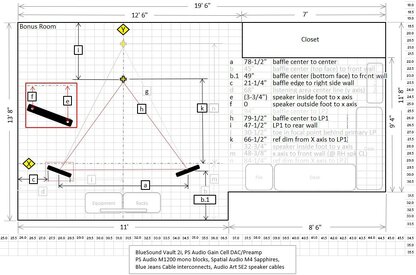 Room Dim Spkr Setup.jpg118.4 KB · Views: 86
Room Dim Spkr Setup.jpg118.4 KB · Views: 86 -
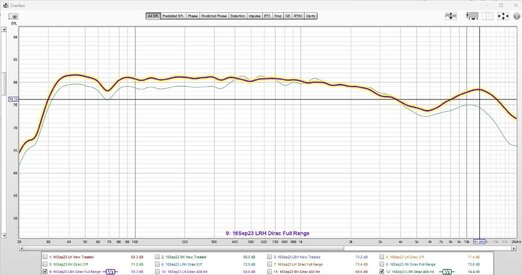 Full Range v 400 Hz Both Speakers.jpg176 KB · Views: 74
Full Range v 400 Hz Both Speakers.jpg176 KB · Views: 74 -
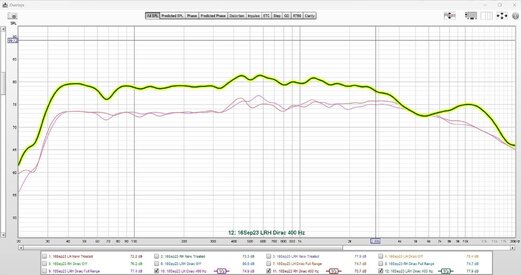 400 Hz L_R and Both Speakers.jpg179.7 KB · Views: 70
400 Hz L_R and Both Speakers.jpg179.7 KB · Views: 70 -
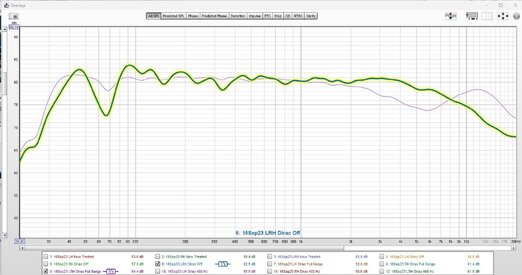 Full Range v Off Both Speakers.jpg178.4 KB · Views: 72
Full Range v Off Both Speakers.jpg178.4 KB · Views: 72 -
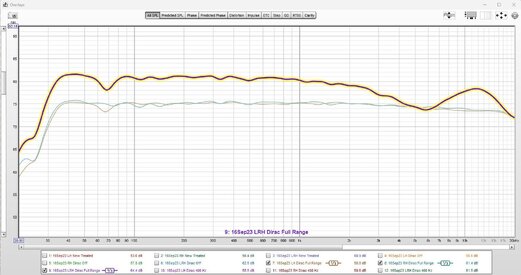 Full Range L_R and Both Speakers.jpg175.2 KB · Views: 65
Full Range L_R and Both Speakers.jpg175.2 KB · Views: 65 -
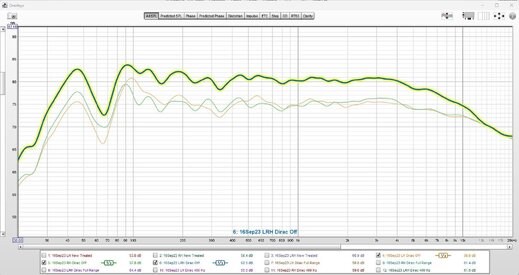 Dirac Off L_R and Both Speakers.jpg185.8 KB · Views: 67
Dirac Off L_R and Both Speakers.jpg185.8 KB · Views: 67
Last edited:







